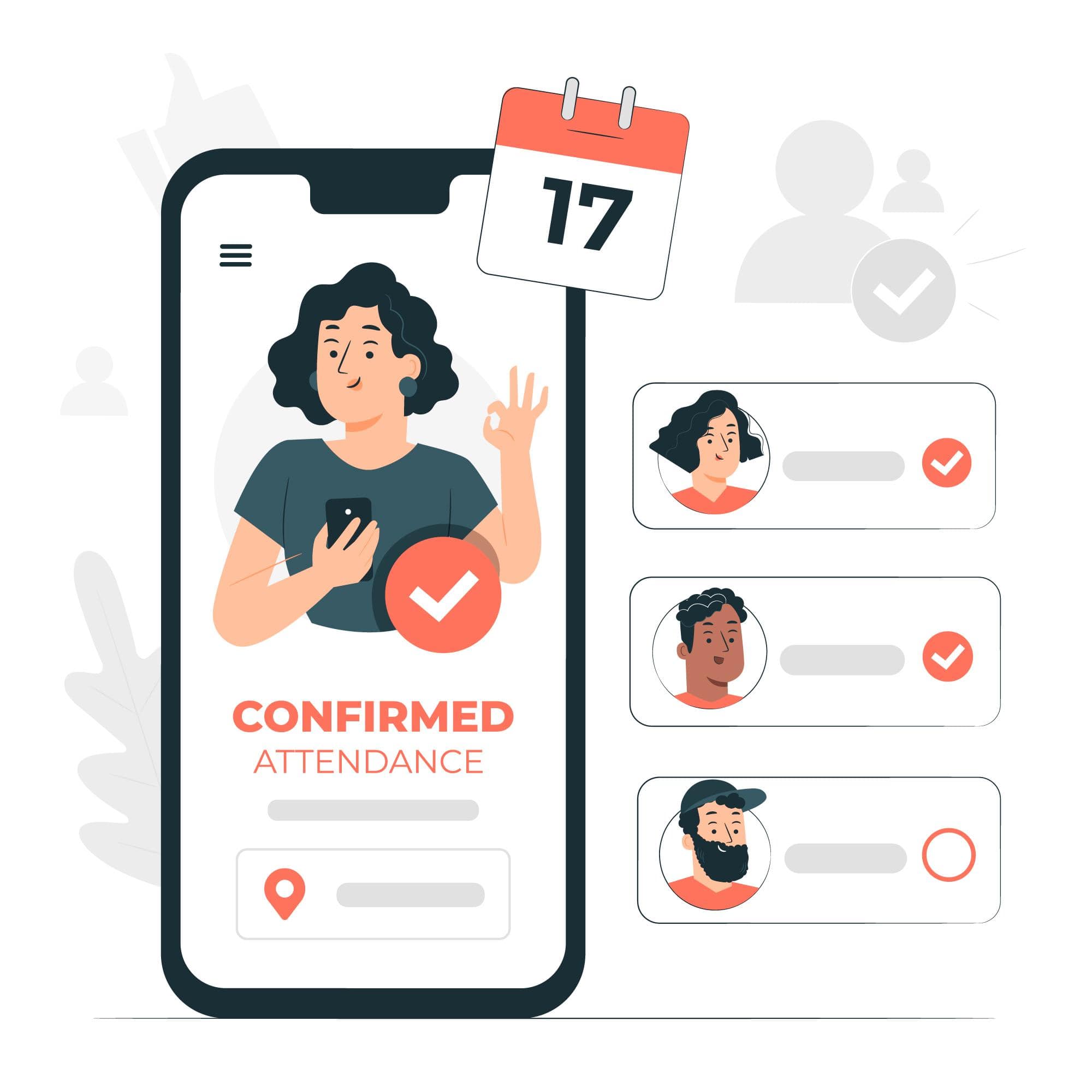Table of Contents

Photo by jagritparajuli99 on Pixabay
Organizing a webinar can be a stressful affair. You never quite know how many people will attend, and you still need to put in all the preparation work.
Live webinars can be a great way to engage with your target audience. You have them there, right in front of you, and not only can you answer all of their questions to remove any doubts they may have about you or your offer. But you can also monitor their reactions and actions over the course of the webinar campaign to finetune your process.
Our experience helping online course creators optimize their webinar funnels has taught us that you need to run a specific webinar six to eight times – which often comes down to three to six months of iteration – before it’s ready to be turned into an automated webinar funnel.
The more people attend your webinars, the better your data on what works and what doesn’t. One of the most important things for getting lots of signups is choosing the right date and time for your webinar.
In this post, we’ll go over to:
- Why webinar timing is important
- What to consider when deciding the best time for webinars
- How to maximize webinar attendance
The Importance of Timing Your Webinars Right
While getting enough signups might be your main concern, there are some other things to take into account when planning a successful webinar:
- Other marketing campaigns: Are you running other marketing campaigns that might affect or be negatively impacted by the promotion for your webinar?
- Resources: Does your team have the time, budget, and tools to properly plan and execute this webinar?
- Holidays: Are there any national or local holidays that impact when you can promote this webinar, and how many people will sign up?
- Business events: If you’re targeting other businesses, your webinar might suffer if you plan it during a big conference or at the closing of the tax season when your target audience has other things on its mind.
When to announce your webinar
Timing your webinar right is one thing. You also need to give people enough time to register, and you don’t want to plan your webinar so last minute that people’s calendars are already full.
Two weeks is a good timeframe. It’s long enough beforehand that people can shift things around if they really want to attend, and not so much in advance that they’ll have forgotten about it by the time it happens.
Understanding the channels to promote your webinar will also ensure you maximize attendance. Is your audience most responsive on social media, or do they take more actions via email campaigns? Cross-promote the webinar to make sure you have the highest attendance possible.
The Best Time for Webinars According to Research

On24 did the research analyzing thousands of webinars across different industries to get data about hosting webinars with high attendance. Their 2019 report found that 28% of webinar attendees sign up for a webinar on a Thursday. Wednesday and Thursday were the days that consistently had the highest webinar attendance.
They found that 39% of webinars analyzed went live between 10 am and 12 pm PST, with the best time for webinars being 11 am.
It makes sense that mid-morning Pacific Standard Time is the most popular time because it’s 2 pm EST and 8 pm in Europe. The time makes it easy for multiple time zones to catch the Livestream and achieve your webinar success.
While these are the best webinar times and days for webinars, according to this study, do consider the audience your webinar is targeting before making firm decisions about when to host it. Below are some things to consider.
For B2B webinars
With 76% of B2B purchasing decision makers using webinars to inform their decisions, it’s a no-brainer that webinars should be part of your B2B sales strategy.
For B2B webinars, you’ll be targeting people during their working hours. So, remember that the best days for webinars are in the middle of the week – Thursday, Wednesday, and Tuesday, in that order, with Thursday being the best day for webinars, according to research.
This makes sense as people are full-on planning the week ahead on Monday and already thinking about the weekend on Fridays.
Top tip: Take into account holidays. If there’s a long weekend starting on Friday, the Thursday before is likely not the best day to host a webinar, even though it’s a Thursday.
If you’re in the US, the hours before and after lunch seem to be the best times for webinars: from 10 to 11 am and from 1 to 2 pm. It’s unclear as to whether people’s lunch hour affects these times. They might work well because people in all US time zones and Europe can attend them without having to wake up super early or stay at their laptops late.
For B2C webinars
If your audience works 9-5 hours, chances are hosting a webinar at 11 am on Thursday won’t work for them. If your online event is to find potential customers for your B2C brand, you’ll want to target them outside working hours.
That means the best time to do a webinar for them would be sometime in the evening or on the weekend. If that’s hard to schedule for you because you don’t want to be working, then offering an on-demand webinar could be the best way to ensure high-quality leads can easily access your content while you still get your time off.
Another thing to consider for B2C webinar content is to make the content smartphone-compatible, as many of your customers will be watching via mobile.
Get Your FREE Personalized Report
Determining the Best Time to Host a Webinar for Your Brand

Know your audience
You don’t just want your webinar to attract a lot of people; you want it to attract the right kind of people into your funnel. That means knowing who those people are and when they will likely have time for you.
Where in the world and in which time zone do they live? When does their week look busiest, and when can they easily set an hour aside for your webinar? If you have a global audience, you may need to run a couple of webinars at different times so you can cover multiple time zones.
Possibly, the best way to know when to organize your webinar is to simply ask your audience when they are available. At Data Driven Marketing, we let our audience know we plan on hosting a webinar and then ask them not only when they’d be available but also what topics they’d be interested in hearing about.
To plan a successful event, you may also want to consider how to engage your audience throughout the webinar. On24’s research shows that the best-performing webinars have interactive elements such as Q&As, surveys, and polls.
Webinars aren’t simply online presentations but should offer a way for the audience to interact so they can understand more about your business in a short timeframe.
Check your marketing calendar
If you’re launching or relaunching a new product, you want to plan your webinars in such a way that they support that launch. While you can analyze the best times to host a webinar as much as you want, the best timing is one that aligns with your marketing goals.
Follow current events
You can get a lot of traction if you manage to tie your offer into current events. Say you run a course on how to migrate to Sweden, and the country once again makes the news for its high quality of living. Then, you might want to take that as an opportunity to host a webinar on moving to Sweden.
Easier to plan for are recurring holidays and other times of the year. Valentine’s Day gives you a good reason to host a webinar if you run a course related to dating or relationships. And the start of the year is a great time to host a webinar for both businesses and consumers who want to improve themselves.
Track and improve
While the research shows the best day and time for webinars in general, your audience may be a little different.
After hosting your first webinar, use the valuable insights from the attendance records to learn what worked and where you could improve. A/B tests two different times to see which gets the most webinar registrations.
You can also track engagement to see how many people started the webinar and then dropped off. If you see high bounce rates from your webinars, maybe it’s not the timing that’s the problem but the content itself.
To gain insight into what customers think, ask them to fill out a short feedback form at the end of the webinar. Ask them questions such as how useful they found the webinar on a scale of 1-5.
Offer a replay
Not everyone will be able to attend your live webinar, so offering an on-demand version of your webinar can help you reach an even wider audience. It also means the valuable content you created for the webinar doesn’t go to waste.
A high-value webinar can even replace sales calls if it provides a solid introduction to your brand and answers frequently asked questions.
How Long Should Your Webinar Last?
According to On24, the average webinar viewing time is 56 minutes. Most webinars last an hour, as it’s a manageable amount of time for people to carve out in their day.
The length of your webinar depends on the topic you want to cover; if it’s something complex, you’ll need more than an hour to go through it.
As a general rule, always leave time for questions and answers after your webinar presentation.
Host Webinars that Drive Your Audience to Action
Now you know the best time for webinars, it’s time to start using them as part of your sales and webinar marketing strategy. Webinars are a great way to reach your target audience, and don’t forget: webinars have high conversion rates.
Maximizing attendance will take trial and error – determining where to promote and what time and day to host the webinar. However, once you have a formula, webinars can become a part of your well-oiled sales machine.
Are you starting with webinar hosting? Need some help with getting more attendees and creating the content to offer the best webinar in your industry? Book a call with us, and we’ll help you refine your webinar strategy.





